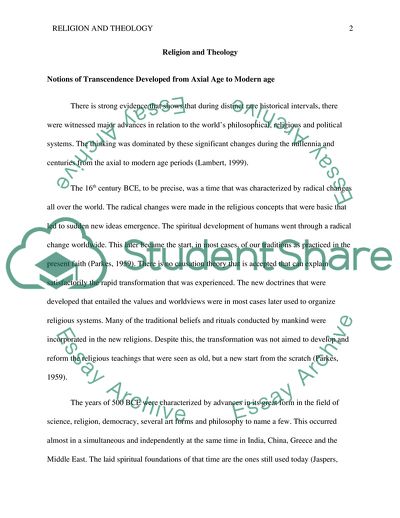Cite this document
(Notions of Transcendence Developed from Axial Age to Modern Age Essay Example | Topics and Well Written Essays - 2000 words, n.d.)
Notions of Transcendence Developed from Axial Age to Modern Age Essay Example | Topics and Well Written Essays - 2000 words. https://studentshare.org/religion-and-theology/1868575-final-paper
Notions of Transcendence Developed from Axial Age to Modern Age Essay Example | Topics and Well Written Essays - 2000 words. https://studentshare.org/religion-and-theology/1868575-final-paper
(Notions of Transcendence Developed from Axial Age to Modern Age Essay Example | Topics and Well Written Essays - 2000 Words)
Notions of Transcendence Developed from Axial Age to Modern Age Essay Example | Topics and Well Written Essays - 2000 Words. https://studentshare.org/religion-and-theology/1868575-final-paper.
Notions of Transcendence Developed from Axial Age to Modern Age Essay Example | Topics and Well Written Essays - 2000 Words. https://studentshare.org/religion-and-theology/1868575-final-paper.
“Notions of Transcendence Developed from Axial Age to Modern Age Essay Example | Topics and Well Written Essays - 2000 Words”. https://studentshare.org/religion-and-theology/1868575-final-paper.


